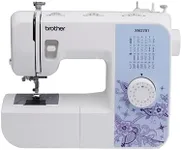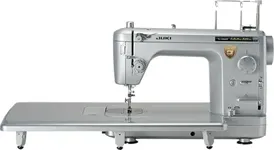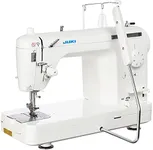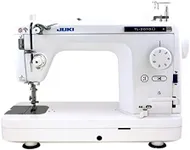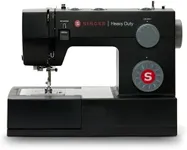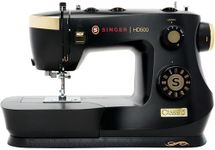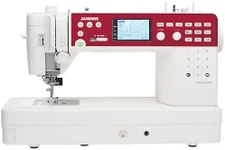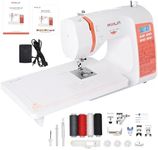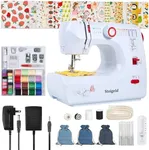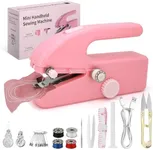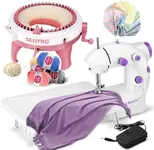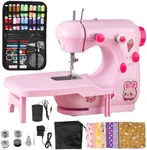Buying Guide for the Best Inexpensive Sewing Machines
Choosing the right sewing machine can be a game-changer for your sewing projects, whether you're a beginner or an experienced sewer. When looking for an inexpensive sewing machine, it's important to focus on the features that will best meet your needs without breaking the bank. Here are some key specifications to consider and how to navigate them to find the best fit for you.Stitch OptionsStitch options refer to the different types of stitches a sewing machine can perform, such as straight, zigzag, and decorative stitches. This spec is important because it determines the versatility of the machine. Basic machines may offer 6-10 stitch options, which are sufficient for simple projects and repairs. Mid-range machines might offer 20-50 stitches, providing more creative possibilities. Advanced machines can have over 100 stitch options, ideal for complex and decorative sewing. Choose a machine with stitch options that match your sewing needs; beginners can start with fewer options, while more experienced sewers might want a wider variety.
Built-in Needle ThreaderA built-in needle threader is a feature that helps you thread the needle automatically. This is important because it saves time and reduces eye strain, especially for those with poor eyesight or shaky hands. Machines with this feature are particularly user-friendly. If you often struggle with threading needles, look for a machine with a built-in needle threader to make your sewing experience smoother and more enjoyable.
Buttonhole StylesButtonhole styles refer to the different ways a sewing machine can create buttonholes. This spec is important for garment making and other projects that require button closures. Basic machines may offer a 4-step buttonhole, which requires manual adjustments. More advanced machines offer 1-step buttonholes, which are fully automatic and easier to use. Some machines provide multiple buttonhole styles for different looks. If you plan to sew clothing or items with buttons, consider a machine with at least a 1-step buttonhole feature for convenience.
Speed ControlSpeed control allows you to adjust the sewing speed of the machine. This is important for managing different types of fabrics and sewing techniques. Basic machines may have a single speed, which can be limiting. Machines with variable speed control let you sew slowly for intricate work or faster for straight seams. If you're a beginner, a machine with adjustable speed control can help you learn at your own pace and handle a variety of projects more effectively.
Weight and PortabilityWeight and portability refer to how heavy and easy to move the sewing machine is. This is important if you need to store the machine away when not in use or if you plan to take it to classes or sewing groups. Lightweight machines (under 15 pounds) are easier to carry and store but may be less stable. Heavier machines (over 15 pounds) are more stable but harder to move. Consider your space and how often you'll need to move the machine when choosing the right weight for you.
Automatic FeaturesAutomatic features include functions like automatic thread cutting, automatic tension adjustment, and automatic bobbin winding. These features are important because they simplify the sewing process and save time. Basic machines may have few or no automatic features, while more advanced machines offer several. If you value convenience and efficiency, look for a machine with more automatic features to make your sewing experience easier and more enjoyable.
